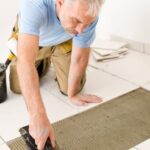A home improvement exemption can provide homeowners with tax benefits for qualifying projects. Understanding what is included in this exemption is crucial for maximizing potential savings and avoiding any confusion or mistakes when claiming it. Whether you’re planning to renovate your kitchen, install solar panels, or make energy-efficient upgrades, knowing the ins and outs of a home improvement exemption can save you money in the long run.
Eligible home improvement projects such as renovations, additions, and energy efficiency upgrades are typically included in a home improvement exemption. These projects can not only enhance the value and comfort of your home but also provide potential tax benefits. It’s important for homeowners to have a clear understanding of which projects qualify for this exemption and how to properly document their expenses.
On the other hand, there are also excluded projects that do not typically fall under a home improvement exemption. Understanding why certain projects may not be eligible can help homeowners avoid unexpected tax implications or disqualifications. By being aware of these exclusions, homeowners can better plan their home improvement projects and avoid unnecessary expenses or complications when it comes to tax time.
Eligible Home Improvement Projects
When it comes to home improvement exemptions, it’s important to understand what types of projects qualify for this benefit. Eligible home improvement projects typically include renovations and upgrades that enhance the value, functionality, or energy-efficiency of a home. These projects can range from minor repairs to major remodels and are essential for maintaining and increasing the overall quality of a property.
Kitchen and Bathroom Remodeling
Updating kitchen and bathroom spaces are common home improvement projects that are often covered by the exemption. This can include installing new fixtures, countertops, flooring, or cabinetry to give these areas a fresh and modern look.
Energy-Efficient Upgrades
Making energy-efficient improvements such as adding solar panels, upgrading windows and doors, or improving insulation can also be eligible for the exemption. These upgrades not only reduce utility bills but also contribute to environmental sustainability.
Roof Repairs and Replacement
Repairing or replacing a damaged roof is another example of an eligible home improvement project. A well-maintained roof is crucial for the structural integrity of a home and can increase its overall value.
These are just a few examples of the many projects that may qualify for a home improvement exemption, but it’s important to consult with local tax authorities or professionals to determine eligibility based on individual circumstances. Knowing what qualifies can help homeowners better plan their renovation projects while taking advantage of potential tax benefits.
Excluded Projects
When it comes to home improvement exemptions, not all projects are eligible for tax benefits. Typically, projects that are considered regular maintenance or repairs do not qualify for the exemption. This may include tasks such as painting, fixing leaks, and replacing broken fixtures. These types of projects are often seen as necessary to maintain the home’s current condition and are not intended to improve the value of the property.
The reason behind excluding these types of projects from the home improvement exemption is that they are not seen as adding value or increasing the functionality of the property. The primary purpose of a home improvement exemption is to encourage homeowners to make upgrades that will enhance their living space and potentially increase the value of their home in the long run.
In order to avoid confusion and potential issues with claiming a home improvement exemption, it’s important for homeowners to clearly understand what type of projects are excluded. Keeping records of all home improvement expenses and consulting with a tax professional can also help ensure that you are maximizing your potential tax benefits while staying within the guidelines set forth by tax authorities.
| Eligible Home Improvement Projects | Excluded Projects |
|---|---|
| Kitchen Remodel | Regular Maintenance Tasks |
| Bathroom Renovation | Painting |
| Roof Replacement | Fixing Leaks |
Documentation Requirements
When claiming a home improvement exemption, it’s essential to keep organized and detailed documentation of all the work done on your property. This documentation is crucial for proving the eligibility of your home improvement projects and can also be necessary for potential tax benefits.
Potential Documentation
The documentation that may be required to claim a home improvement exemption includes proof of payment, contracts with contractors, permits, before and after photos, receipts for materials, and any other relevant paperwork. It’s important to keep all these documents in a safe place for reference if needed.
Keeping Organized Records
To ensure that you have all the necessary documentation, it’s recommended to create a dedicated file or folder specifically for your home improvement projects. This will help you stay organized and have all the paperwork readily available when it comes time to claim any exemptions or benefits.
Professional Advice
Seeking professional advice from tax consultants or accountants can provide valuable insight into what specific documentation is needed in your situation. These professionals can also offer guidance on how to properly maintain records and manage any future home improvement projects to maximize potential tax benefits while ensuring compliance with regulations.
Qualifying Expenses
When it comes to determining what expenses are typically included in a home improvement exemption, it’s important for homeowners to understand the distinction between regular home maintenance and eligible improvement expenses. Generally, qualifying expenses include any costs associated with making upgrades or improvements that add value to the home. This can encompass a wide range of projects, from major renovations to smaller-scale improvements.
Some examples of qualifying expenses that are commonly included in a home improvement exemption are kitchen or bathroom renovations, adding an additional room, installing a new roof, upgrading heating, ventilation and air conditioning (HVAC) systems, or making the home more energy efficient with new windows or insulation. The key factor is that these projects all contribute to enhancing the overall value and functionality of the property.
It’s crucial for homeowners to keep accurate records and receipts for all qualifying expenses associated with their home improvement projects. This documentation may include invoices from contractors, receipts for materials purchased, permits obtained, and any other relevant paperwork. Having organized records will not only make it easier to claim the exemption but also provide essential documentation in case of an audit by tax authorities.
| Qualifying Expense Category | Examples |
|---|---|
| Kitchen Renovations | New cabinets, countertops, appliances |
| Bathroom Upgrades | New fixtures, tiling, shower installations |
| Roof Replacement | New roofing materials and labor costs |
| Energy Efficient Improvements | Purchase of ENERGY STAR certified windows or insulation materials |
State-Specific Regulations
When it comes to home improvement exemptions, it’s important to note that the regulations can vary from state to state. Each state may have its own specific criteria for what qualifies as a home improvement project and what expenses are eligible for the exemption. It’s crucial for homeowners to familiarize themselves with the regulations in their particular state to ensure they are properly following the guidelines.
For example, some states may have restrictions on certain types of projects or may require specific documentation in order to claim the exemption. By understanding the state-specific regulations, homeowners can avoid potential issues when it comes time to file for the exemption on their taxes.
To find information on home improvement exemptions in a specific state, homeowners can consult their state’s department of revenue or taxation website. These resources typically provide detailed information on what qualifies as a home improvement, eligible expenses, and any additional requirements for claiming the exemption. Additionally, seeking advice from a professional tax consultant or attorney who is knowledgeable about state-specific regulations can also provide valuable guidance for homeowners undertaking home improvement projects.
Ultimately, being aware of and adhering to state-specific regulations regarding home improvement exemptions is essential for homeowners looking to benefit from potential tax savings. By staying informed and following the guidelines set forth by their state, homeowners can ensure they are making the most of this opportunity while avoiding any complications with their taxes.
Potential Tax Benefits
When it comes to home improvement projects, there are potential tax benefits that homeowners can take advantage of. Understanding these benefits is crucial in maximizing savings and making informed decisions about which projects to undertake. Here are some potential tax benefits to consider when planning home improvement projects:
1. Tax Deductions: Certain home improvement expenses may be tax-deductible, leading to a reduction in taxable income. This can include expenses related to energy-efficient upgrades, medical necessity renovations, or home office improvements.
2. Capital Gains Exclusion: When selling a home, any profit made from the sale may be excluded from capital gains tax if the homeowner has lived in the property for at least two of the past five years and meets certain other criteria. This can be an important consideration for homeowners as they plan their improvement projects.
3. Energy Efficiency Credits: Installing energy-efficient systems and appliances in a home may make homeowners eligible for tax credits. These credits can offset a portion of the cost of these improvements and provide long-term energy savings.
Understanding and taking advantage of these potential tax benefits can make a significant impact on the overall cost of home improvement projects. However, it’s important for homeowners to consult with tax professionals or financial advisors to fully understand their eligibility and how best to leverage these benefits for their specific situation.
Conclusion
In conclusion, understanding what is included in a home improvement exemption is crucial for homeowners looking to undertake projects and potentially benefit from tax advantages. Eligible home improvement projects typically include renovations, upgrades, and additions that enhance the value or functionality of the property. These can range from kitchen remodels and bathroom renovations to new roofing and energy-efficient upgrades. Keeping organized documentation and records of these projects is essential for claiming the exemption and maximizing potential tax benefits.
It’s important to note that certain projects are not typically included in a home improvement exemption, such as regular maintenance or repairs that do not significantly enhance the property’s value or functionality. Homeowners should be aware of these exclusions and understand the distinction between qualifying expenses and general upkeep costs. Additionally, state-specific regulations can vary, so it’s advisable to research and consult local resources for specific information regarding home improvement exemptions in their area.
Ultimately, claiming a home improvement exemption can offer potential tax benefits for homeowners who have undertaken eligible projects. Whether it’s through deductions or credits, understanding how these exemptions can impact one’s taxes is essential. However, it is recommended that individuals seek professional advice or further research their specific circumstances to ensure they maximize any potential tax advantages. By doing so, homeowners can make informed decisions about their home improvement endeavors while also optimizing their financial benefits.
Frequently Asked Questions
What Home Improvements Increase Property Taxes in Illinois?
Home improvements that can increase property taxes in Illinois include adding an additional room, remodeling the kitchen or bathroom, finishing a basement, or making significant upgrades to the home’s overall value. These improvements can lead to a reassessment of the property’s value, resulting in higher property taxes.
What Is the Homestead Exemption in Illinois?
The Homestead Exemption in Illinois is a benefit that reduces the equalized assessed value of a homeowner’s primary residence. This exemption can result in lower property taxes for qualifying homeowners. To be eligible, the property must be occupied as the owner’s principal dwelling place as of January 1st of the tax year.
What Is the Homestead Improvement Exemption in Cook County?
The Homestead Improvement Exemption in Cook County provides tax relief to homeowners who make certain home improvements that increase the market value of their residence. This exemption allows for a reduction in the taxable value of the property for up to four years following the improvement project.
Eligible improvements may include new construction, remodeling, or rehabilitation work on a residential property.

I’m thrilled to have you here as a part of the Remodeling Top community. This is where my journey as an architect and remodeling enthusiast intersects with your passion for transforming houses into dream homes.





